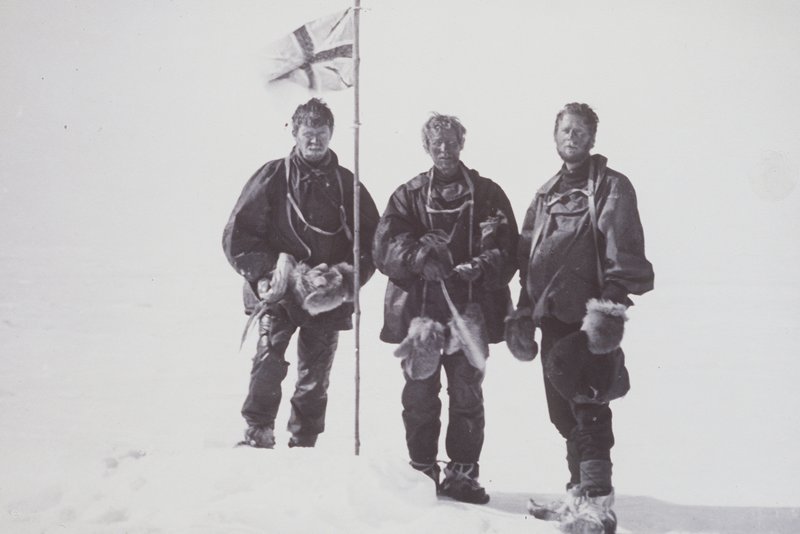|
Simmers Peaks
Simmers Peaks () is a group of three peaks, the highest 840 m, rising above the icecap 13 miles (21 km) southeast of Cape Close and 11 miles (18 km) north of Mount Codrington. They were discovered by the British Australian New Zealand Antarctic Research Expedition (BANZARE) under Mawson Sir Douglas Mawson OBE FRS FAA (5 May 1882 – 14 October 1958) was an Australian geologist, Antarctic explorer, and academic. Along with Roald Amundsen, Robert Falcon Scott, and Sir Ernest Shackleton, he was a key expedition leader durin ... in 1930 and were named for R.G. Simmers, the meteorologist of the expedition. Mountains of Enderby Land {{EnderbyLand-geo-stub ... [...More Info...] [...Related Items...] OR: [Wikipedia] [Google] [Baidu] |
Cape Close
Cape Close () is a cape on the coast of Enderby Land, west of Cape Batterbee. It was discovered by the British Australian New Zealand Antarctic Research Expedition, 1929–31, under Mawson, who named it for Sir Charles Close, President of the Royal Geographical Society The Royal Geographical Society (with the Institute of British Geographers), often shortened to RGS, is a learned society and professional body for geography based in the United Kingdom. Founded in 1830 for the advancement of geographical scien ..., 1927–30. References Headlands of Enderby Land {{EnderbyLand-geo-stub ... [...More Info...] [...Related Items...] OR: [Wikipedia] [Google] [Baidu] |
Mount Codrington
Mount Codrington () is a prominent mountain, high, standing south-southeast of Cape Close, east of Johnston Peak, and south of Simmers Peaks. Mount Codrington forms the northeastern end of the Napier Mountains. It was charted in 1930 by the British Australian New Zealand Antarctic Research Expedition under Mawson as being the prominent peak sighted and so named by John Biscoe in March 1831. See also * History of Antarctica * List of Antarctic expeditions This list of Antarctic expeditions is a chronological list of expeditions involving Antarctica. Although the existence of a southern continent had been hypothesized as early as the writings of Ptolemy in the 1st century AD, the South Pole was no ... References * External links Australian Antarctic DivisionAustralian Antarctic GazetteerAustralian Antarctic Names and Medals Committee (AANMC)Scientific Committee on Antarctic Research (SCAR)PDF Map of the Australian Antarctic TerritoryANARE ClubList of Peaks in Enderb ... [...More Info...] [...Related Items...] OR: [Wikipedia] [Google] [Baidu] |
British Australian New Zealand Antarctic Research Expedition
The British Australian (and) New Zealand Antarctic Research Expedition (BANZARE) was a research expedition into Antarctica between 1929 and 1931, involving two voyages over consecutive Austral summers. It was a British Commonwealth initiative, driven more by geopolitics than science, and funded by the United Kingdom, Australia and New Zealand. The leader of the BANZARE was Sir Douglas Mawson and there were several subcommanders (Captain K.N. MacKenzie, who replaced Captain John King Davis for the second summer) on board the RRS Discovery, the ship previously used by Robert Falcon Scott. The BANZARE, which also made several short flights in a small plane, mapped the coastline of Antarctica and discovered Mac. Robertson Land and Princess Elizabeth Land (which later was claimed as part of the Australian Antarctic Territory). The voyages primarily comprised an "acquisitive exploratory expedition", with Mawson making proclamations of British sovereignty over Antarctic lands at each ... [...More Info...] [...Related Items...] OR: [Wikipedia] [Google] [Baidu] |
Mawson
Sir Douglas Mawson OBE FRS FAA (5 May 1882 – 14 October 1958) was an Australian geologist, Antarctic explorer, and academic. Along with Roald Amundsen, Robert Falcon Scott, and Sir Ernest Shackleton, he was a key expedition leader during the Heroic Age of Antarctic Exploration. Mawson was born in England and came to Australia as an infant. He completed degrees in mining engineering and geology at the University of Sydney. In 1905 he was made a lecturer in petrology and mineralogy at the University of Adelaide. Mawson's first experience in the Antarctic came as a member of Shackleton's ''Nimrod'' Expedition (1907–1909), alongside his mentor Edgeworth David. They were part of the expedition's northern party, which became the first to attain the South Magnetic Pole and to climb Mount Erebus. After his participation in Shackleton's expedition, Mawson became the principal instigator of the Australasian Antarctic Expedition (1911–1914). The expedition explored th ... [...More Info...] [...Related Items...] OR: [Wikipedia] [Google] [Baidu] |

